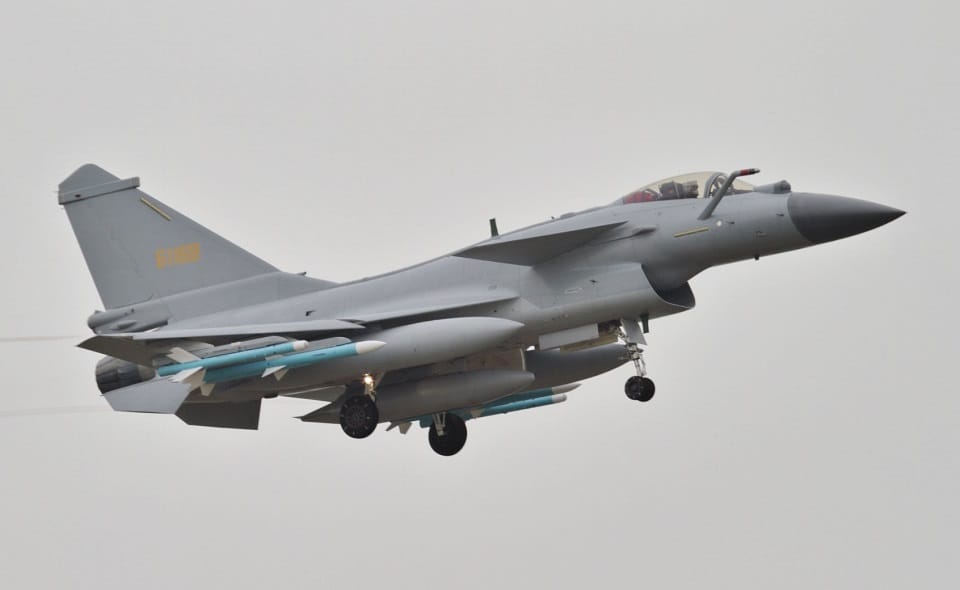Aviation
Egypt has signed an agreement with China to purchase J-10C fighter jets

Egypt has become the second country, after Pakistan, to order China’s Chengdu J-10C “Vigorous Dragon” fighter jets, marking a significant shift in its military strategy.
The announcement, made during the inaugural Egypt International Air Show from September 3 to 5 at El Alamein International Airport, reveals Egypt’s intent to replace its aging fleet of U.S. F-16s.
The J-10C, a highly capable 4.5-generation multi-role fighter jet, was showcased by China for the first time on African soil during the air show. It features advanced air-to-air and air-to-ground weaponry, making it a formidable alternative to Egypt’s current fleet.
Known for its air superiority missions, the J-10C has often been compared to the American F-16, which has been the backbone of the Egyptian Air Force since the 1980s.
However, with Egypt’s F-16s now considered outdated against modern air defense systems, the decision to transition to the Chinese fighters underscores a major upgrade in Egypt’s combat capabilities.
This move not only signals Egypt’s intent to reduce its reliance on U.S. defense systems but also reflects a broader shift in its international alliances.
Despite a long-standing defense relationship with the U.S., evidenced by a recent acquisition of C-130J Hercules transport aircraft through the U.S. Foreign Military Sales program, Egypt is clearly looking eastward.
The decision comes amid growing concerns over U.S. policies in the Middle East, including its stance on Israeli operations in Gaza, which may have influenced Cairo’s pivot to Chinese military technology.
China’s increasing presence in the Middle East and North Africa is bolstered by such deals, as Beijing continues to expand its influence through military cooperation and economic partnerships, particularly in energy imports.
The Egypt International Air Show provided a platform for showcasing this growing military-industrial relationship.

Airlines
Air India to Launch aircraft maintenance training institute in Bengaluru

Air India, one of India’s leading global airlines, is set to establish a Basic Maintenance Training Organization (BMTO) in Bengaluru.
This institute will offer a comprehensive Aircraft Maintenance Engineering (AME) program certified by the Directorate General of Civil Aviation (DGCA). The program will follow an integrated 2+2 year structure, combining classroom learning with practical, hands-on training.
This initiative is part of Air India’s broader goal of creating a robust aviation ecosystem in India. With plans to expand its fleet and strengthen its operations, the airline aims to build a skilled workforce of maintenance engineers, making the organization self-reliant while supporting its ambitious transformation journey.
This country tops visa rejections in the popular Schengen countries
To bring this vision to life, air india has partnered with Bengaluru Airport City Limited (BACL), a subsidiary of Bangalore International Airport Limited (BIAL). Together, they will develop a state-of-the-art facility spanning 86,000 square feet at Bengaluru Airport City.
This purpose-built campus will feature modern classrooms, well-equipped laboratories, and qualified trainers to deliver world-class education and training. The institute is expected to become operational by mid-2026.
The BMTO will be located close to Air India’s new 12-bay Maintenance, Repair, and Overhaul (MRO) facility, also set to open in Bengaluru by early 2026. The AME program will begin with two years of academic coursework, followed by two years of practical training at the MRO, ensuring students receive hands-on experience adhering to industry standards.
Sanctions & Engine Issues Ground Half of Russia’s A320neo fleet
In the meantime, Air India has introduced a Cadet AME program in collaboration with reputable institutions in Bengaluru and Hyderabad.
This ensures continuity in its commitment to developing skilled aircraft maintenance engineers while the BMTO facility is under construction. The program also allows students to pursue a bachelor’s degree through university partnerships, enhancing their career and academic opportunities.
With this initiative, air india plane aims to address the growing demand for skilled professionals in aircraft maintenance and engineering, air india new planes contributing to the development of India’s aviation sector and creating specialized career paths for aspiring engineers.
-

 Aviation2 months ago
Aviation2 months agoMicrosoft Flight Simulator Raises $3 Million to Bring Back the An-225 Mriya
-

 Airlines2 months ago
Airlines2 months agoQatar Citizens Can Travel to the United States Without a Visa
-

 Aviation2 months ago
Aviation2 months agoQatar Airways bans these new Electronic Devices on plane
-

 Airlines2 months ago
Airlines2 months agoJapan Airlines Rolls Out Free Domestic Flights to International Passengers
-

 Defence2 months ago
Defence2 months agoWhich Country Has the Largest Fleet of Fighter Aircraft?
-

 Airport2 months ago
Airport2 months agoWestern Sydney Airport Welcomes Its First Plane After 6 Years of construction
-

 Travel2 months ago
Travel2 months agoQatar Airways Launches Four Additional Flights from Amsterdam
-

 Aviation2 months ago
Aviation2 months agoDid you know ? Once Boeing 747 carried 1088 passenger in 1991








